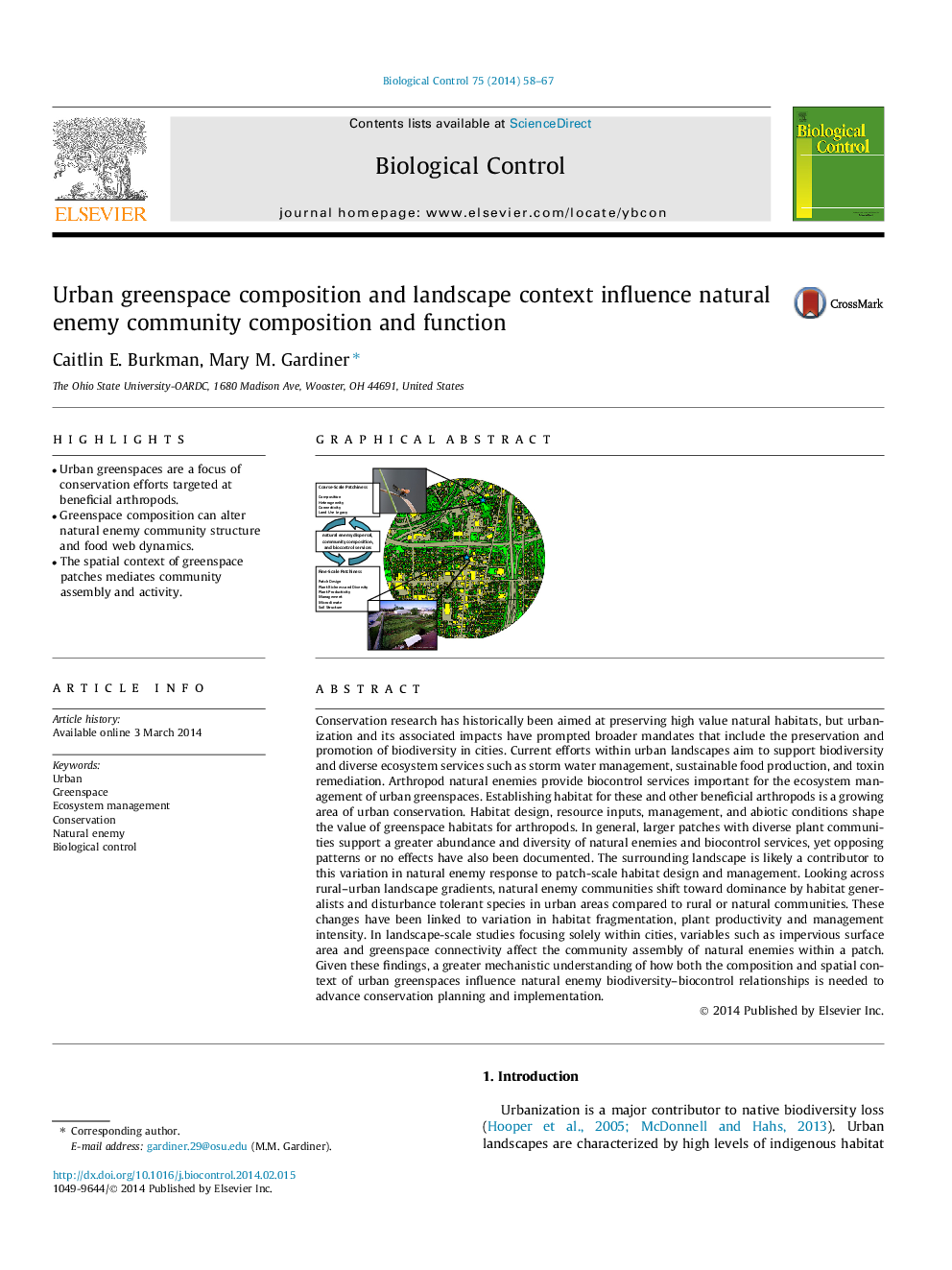| کد مقاله | کد نشریه | سال انتشار | مقاله انگلیسی | نسخه تمام متن |
|---|---|---|---|---|
| 4503903 | 1624259 | 2014 | 10 صفحه PDF | دانلود رایگان |
• Urban greenspaces are a focus of conservation efforts targeted at beneficial arthropods.
• Greenspace composition can alter natural enemy community structure and food web dynamics.
• The spatial context of greenspace patches mediates community assembly and activity.
Conservation research has historically been aimed at preserving high value natural habitats, but urbanization and its associated impacts have prompted broader mandates that include the preservation and promotion of biodiversity in cities. Current efforts within urban landscapes aim to support biodiversity and diverse ecosystem services such as storm water management, sustainable food production, and toxin remediation. Arthropod natural enemies provide biocontrol services important for the ecosystem management of urban greenspaces. Establishing habitat for these and other beneficial arthropods is a growing area of urban conservation. Habitat design, resource inputs, management, and abiotic conditions shape the value of greenspace habitats for arthropods. In general, larger patches with diverse plant communities support a greater abundance and diversity of natural enemies and biocontrol services, yet opposing patterns or no effects have also been documented. The surrounding landscape is likely a contributor to this variation in natural enemy response to patch-scale habitat design and management. Looking across rural–urban landscape gradients, natural enemy communities shift toward dominance by habitat generalists and disturbance tolerant species in urban areas compared to rural or natural communities. These changes have been linked to variation in habitat fragmentation, plant productivity and management intensity. In landscape-scale studies focusing solely within cities, variables such as impervious surface area and greenspace connectivity affect the community assembly of natural enemies within a patch. Given these findings, a greater mechanistic understanding of how both the composition and spatial context of urban greenspaces influence natural enemy biodiversity–biocontrol relationships is needed to advance conservation planning and implementation.
Figure optionsDownload as PowerPoint slide
Journal: Biological Control - Volume 75, August 2014, Pages 58–67
